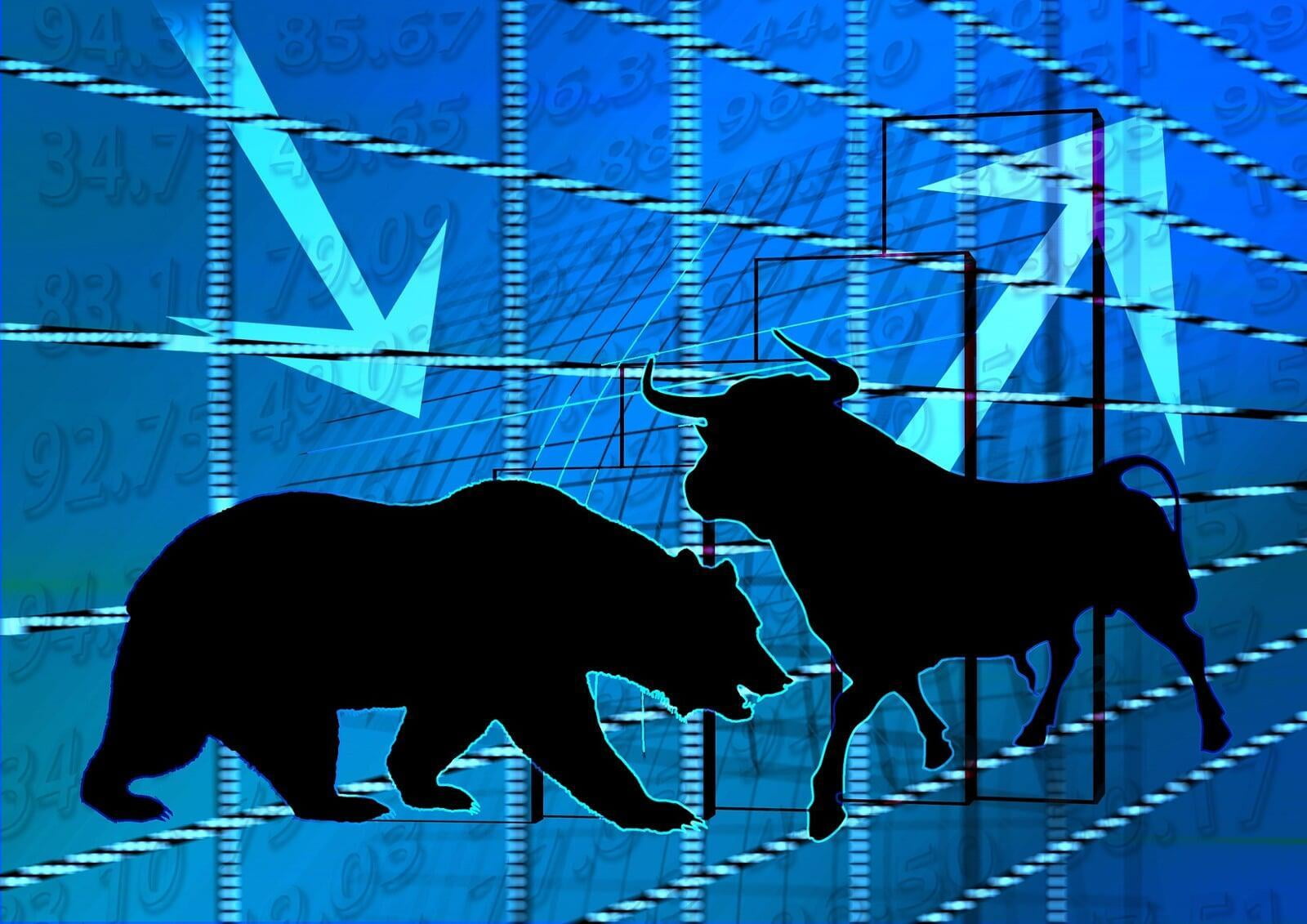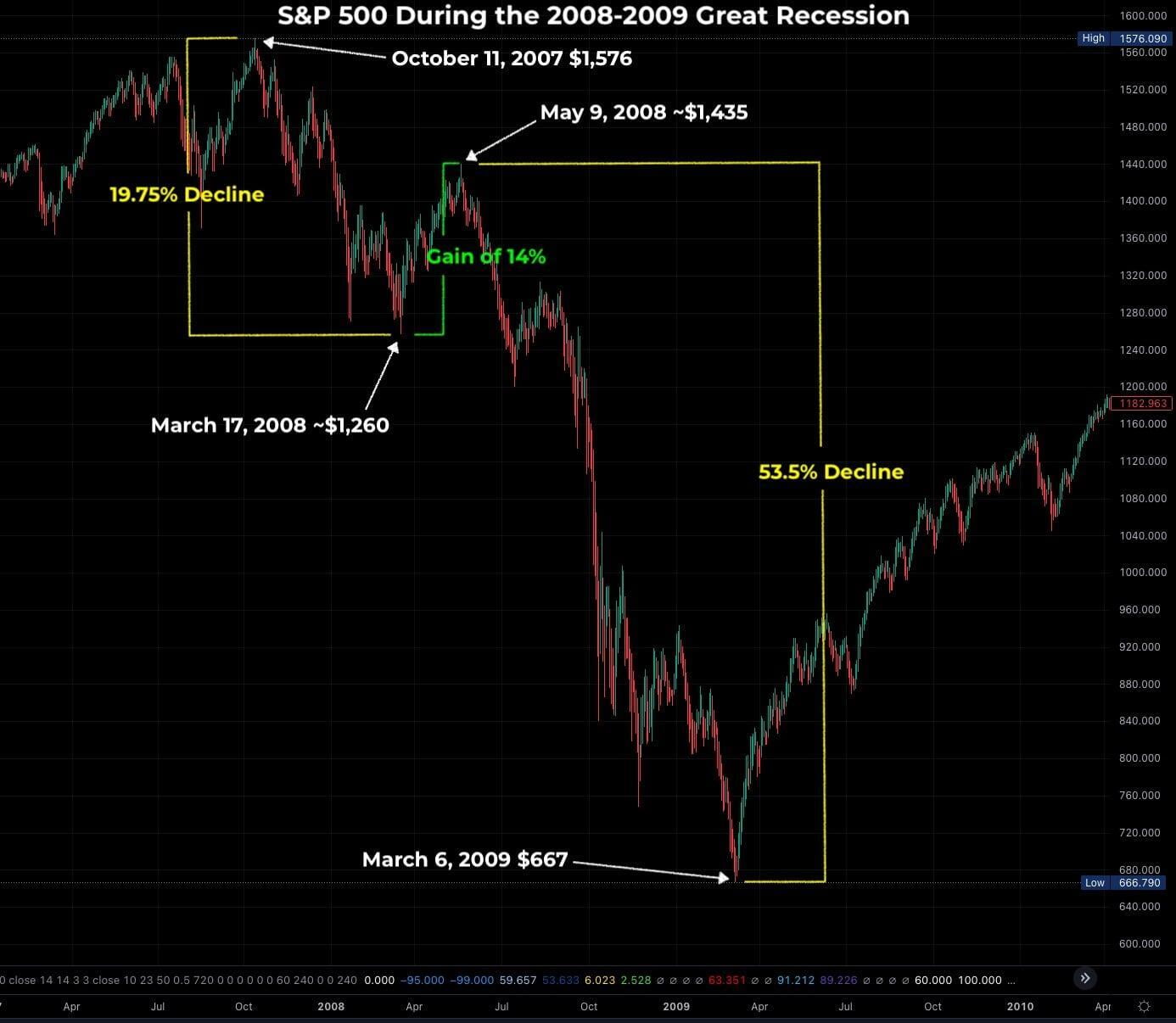
This week has been an interesting one for sure. Yesterday, the Fed raised interest rates another 0.75% to about 2.5%. Following the announcement and the Fed's news conference, the S&P 500 gained about 2.5% for the day and the Nasdaq (the tech index that has seen steeper declines than the other major indices) gained more than 4%. Then, this morning, the GDP (Gross Domestic Product) for the second quarter of the year was announced, revealing a 0.9% decline and the second consecutive decline to indicate the economy is now in a recession. Some may think it's odd then that the markets continued their rally with the S&P 500 gaining about 1.2% and the Nasdaq gaining 1.1% for the day. The Dow also gained over the past two days with about 1.3% yesterday and 1% today.
What's going on? Is the bear market over? Have we seen the bottom in these declines?
The short and simple answer is: no one knows.
To try to make sense of all this, we can look at the most recent serious economic situation: the Great Recession from 2008 and 2009.
On October 11, 2007 the S&P 500 reached a new all time high of approximately $1,576. As the financial markets began to experience problems and the economy entered the recession, the S&P 500 declined by 19.75% to $1,260 by March 17, 2008. From there, the S&P 500 rallied until May 19, 2008, gaining nearly 14% to about $1,435 in only a couple of months. The economy continued to get worse, and from there the S&P 500 declined another 53.5% to $667 by March 6, 2009. The total decline of the S&P 500 from its October 2007 high to the bottom of the bear market in March 2009 was more than 57%. That bear market lasted a total of about 18 months from the date the S&P 500 reached its all time high. This is all illustrated in the chart below, which also shows how volatile the market can be in general with various ups and downs.

Now, let's compare that to the current economy and market activity.
We are currently almost 7 months into the bear market from when the S&P reached its all time high in January. Bear markets don't need to last any specific amount of time, but it's important to note that bear markets can last longer than that.
During the Great Recession there was increased volatility that saw declines and then significant rallies, but then the market declined further again. We've seen exactly that so far during the current bear market. The S&P 500 had declined nearly 24% since its all time high in January. If we use the S&P 500's rally during the Great Recession mentioned above (there were multiple rallies) then the S&P 500 could easily go up to nearly $4,200 (that would be a 14% gain from it's recent low of $3,667) or even farther and still see another significant decline over the next several months.
There are some key differences between the current economy and the economy in 2007-2009. First, inflation is already high, and currently doesn't show signs of coming down, or at least not that quickly. When inflation is high it means there's less money for people to save and invest, which brings down demand for investments and could reduce prices on those investments.
Second, during the Great Recession, the Fed was able to decrease interest rates because inflation wasn't high. Currently, the Fed is raising interest rates because inflation is high. Generally, with the cost of borrowing money going up, money tends to come out of investments. High inflation exacerbates that activity.
During the Great Recession, the government was able to spend hundreds of billions of dollars to bailout financial institutions and other large corporations, as well as other stimulus, to protect the overall economy. Since the start of the COVID-19 pandemic in early 2020, the government has spent about $4.5 trillion to protect and stimulate the economy. The national debt went from $22.7 trillion in 2019 to over $30.6 trillion today. It's not clear if or how the government would be able to stimulate the economy during a recession today since the national debt is already so high and interest rates are currently increasing. The higher interest rates go, the lower the national debt the government would be able to service without creating other economic issues, potentially.
That's the stock market, but what about crypto markets?
Crypto markets have been hit pretty hard. The top two cryptocurrencies, Bitcoin and Ethereum, declined nearly 75% and nearly 82%, respectively, from their November 2021 all time highs. Some may be surprised that these types of downturns are not new for Bitcoin and Ethereum, or for crypto markets in general. For example, Bitcoin declined 83% in 2015, 84% in 2017, and 54% in 2021. Ethereum declined 94% in 2018 and 61% in 2021. After each of those declines, both cryptocurrencies saw new all time highs within about two years. Currently, Bitcoin and Ethereum have recovered 36% and 96% respectively from their recent lows. Just like traditional markets, crypto markets see high volatility during bear markets that include brief rallies that later turn into even further declines.
What is unique about crypto markets is that they haven't been around that long since Bitcoin was first introduced in 2009 and Ethereum's introduction in 2016. Cryptocurrencies did not exist during previous recessions and have not experienced an economy with high inflation or rising interest rates. Already, historical performance can't be a predictor of future performance, so the current economic condition really creates a giant question mark on what will happen next.
So, what now?
You may read a lot of differing opinions about whether the bottom has been seen for stocks and crypto. Some people will say the markets won't go any lower and some will say there are still potentially months left of the bear market and that the markets could go even lower than the recent lows that have already been witnessed.
It's important to remember that no one has a crystal ball and no one can know for sure what will happen next. There are many factors at play: inflation, interest rates, supply chain issues, the labor market, the war in Europe, and more. One or more of these factors could go away (i.e. inflation comes down, the Fed stops raising interest rates or even lowers interest rates, the war in Europe ends, etc.), or new factors can come into play.
Since no one can know what will happen next, it's a good idea to be proceed with any investments with caution, as always. If you're unsure what to do, or if you should do anything at all, you can enlist the assistance of a financial advisor that can offer advice and recommendations on the best path forward to help you continue toward achieving your goals. As always, Escient Financial is here to help. Feel free to...
This content is developed from sources believed to be providing accurate information. The information in this material is not intended as investment, tax, or legal advice. It may not be used for the purpose of avoiding any federal tax penalties. Please consult legal or tax professionals for specific information regarding your individual situation. The opinions expressed and material provided are for general information, and should not be considered a solicitation for the purchase or sale of any security. Digital assets and cryptocurrencies are highly volatile and could present an increased risk to an investors portfolio. The future of digital assets and cryptocurrencies is uncertain and highly speculative and should be considered only by investors willing and able to take on the risk and potentially endure substantial loss. Nothing in this content is to be considered advice to purchase or invest in digital assets or cryptocurrencies.
Enjoying Escient Financial’s Insights?
Escient Financial does NOT sell subscriber information. Your name, email address, and phone number will be kept private.
















